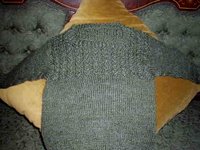I've had lots of near-sleepless nights since the gamma knife procedure. That's due in part to the steroids, I know, but I've had a lot to think about since the middle of February.
When we left Cleveland Clinic on March 1, we had information on 4 drugs, a rough idea of schedule needs, and an assignment: choose the next drug I wanted to use by the end of the week. You may be wondering what goes into making such a decision, and I can tell you it's not easy. The four drugs we were looking at were: Votrient, Torisel, Avastin, and Afinitor. Here are some of the factors we considered:
Schedule - How quickly can one begin a new therapy? What might influence the schedule?
Risks - All of the drugs involve varying types of risk, though certainly better odds than doing nothing. Of the four, which posed the most immediate threat to me based on my individual response to the drugs I've taken so far?
Efficacy - What's the drug's mechanism of action and track record to date? Is it similar to drugs I've already taken, or is it something new that we'll have to monitor closely?
Side effects - Are the side effects controllable with other medications? Is there evidence of any new or particularly threatening side effect that I haven't encountered with other drugs?
Costs - What is the drug's cost? How much will insurance pay? How much will I pay out-of-pocket?
Other considerations - Are there some inherent constraints that will control access, schedule or other points on the list?
Taking these factors, we came up with the following concerns:
Schedule - In this case, Dr. G wanted me to start as soon as I could, possibly by March 8. The problem: steroids would preclude concurrent use of two of the four drugs, and my late-night driving adventure spelled the need for continued steroid use; therefore all four drugs return to the list of possibles. My start date:
on or about my next appointment, April 2Risks - Risk assessment is the hardest part of the equation and is closely tied to the drug's efficacy and side effects. Each person's reaction to a drug is very individualized. So, while I know that VEGF-inhibitors may increase one's risk for internal bleeding, not all VEGF-inhibitors cause me to bleed (so far only Sutent holds that distinction). Newly approved drugs try another approach, with a new drug pathway to try, the mTor inhibitor. My leaning is to exhaust all the drugs of a single class before trying something new; hence my inclination to go with Votrient first. But the most serious side effect of Votrient is the potential for liver failure, and given the liver damage I already have, this gives me pause.
Costs - I'm very lucky; these drugs are horrendously expensive and all require a "pharmacy override". That is, I must use my drug plan's special pharmacy service so that the cost benefits are spread over the entire pool, or else I must pay a good portion out-of-pocket. Heck, yes, I'll let them mail the drug to me and pay my normal co-pay.
Other considerations - Oral drugs can be mailed directly to me; drugs requiring an infusion (in this case, Torisel and Avastin) would be administratively harder to deal with. With infusions, the hospital or facility administering the drug probably would have to receive the drug. Would it go to their pharmacy, in which case would I have to pay more for it? It's not a scenario I'd like to test out just now.
So, my choice became "an oral VEGF-inhibitor", which leaves me with Votrient. As we don't have any idea how my body will react to a new drug, I'll be "baby-sat" off and on while I adjust to the medication and dosage level. I'll probably be traveling to Columbus during the day, sitting and knitting at C2's house. That way should I develop any problems I'm 10 minutes away from the OSU Medical Center, as opposed to being 20 minutes from the nearest hospital here and over an hour from the OSU Medical Center.
There you have it - a breakdown of what is, in essence, a life-and-death decision. It's not something to be taken lightly, but we can certainly weigh all the factors as part of the whole. Given enough information, I can analyze just about anything, I believe, and come up with a decision that I'm happy with.
I'm happy to say that my diaper rash has finally cleared up. Now I've got
pitting edema in my lower legs. What I've read isn't encouraging but at least we're doing what we can to combat it. Will be interested to see what Dr. G wants to do when we go up on Friday.
Labels: decisions, health questions, insurance, maintenance costs, medications, side effects, Votrient


